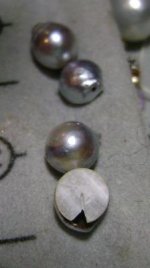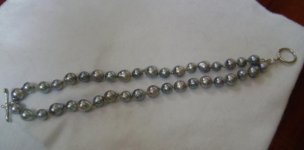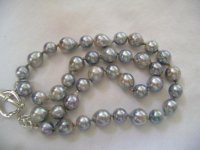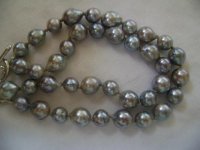waimeamomi
Natural Pearl
- Joined
- Jun 12, 2008
- Messages
- 1,238
I just broke a Vietnamese unbleached akoya pearl. This is part of my knotting project that I have been fighting with all day (on another thread). I tried to force a needle through and this is what I got. Very interesting. Not much in the way of nacre and above the round insert and the baroque top it was empty. Is this normal? There are a couple of others from the strand in the shot too. Argghh. Why am I pending again? I'm going to put them in my album, if anyone is interested.
Attachments
Last edited:





